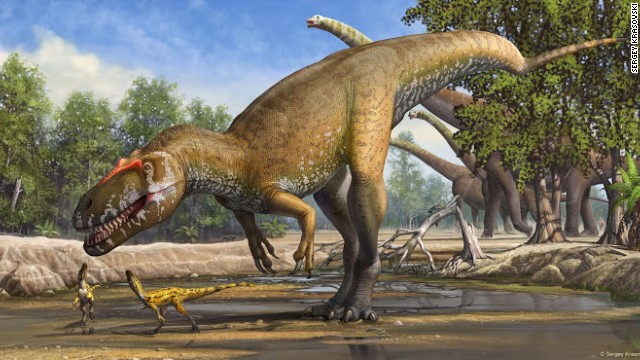
(CNN) — At about 33 feet long, weighing 4 to 5 tons and baring vast blade-shaped teeth, a dinosaur Torvosaurus gurneyi was a challenging creature.
“I suspect it wouldn’t be a good suspicion to cranky a approach of this dinosaur,” pronounced Christophe Hendrickx, doctoral claimant during a New University of Lisbon in Portugal.
Thanks to Hendrickx and paleontologist Octavio Mateus, Torvosaurus gurneyi might have a eminence of being a largest human predator found in Europe. Hendrickx and Mateus report this dinosaur in a new investigate in a biography PLOS One.
The stays of Torvosaurus gurneyi were detected during a Lourinha Formation, a cultivatable site of dinosaur skeleton north of Lisbon.
Before this study, skeleton that scientists contend go to a new class were suspicion to go to Torvosaurus tanneri, a North American dinosaur species.
But comparisons between a stays of a Portuguese and North American specimens advise that they aver graphic class names. For instance, Torvosaurus tanneri had during slightest 11 teeth, while Torvosaurus gurneyi had fewer, scientists said.
Follow CNN Science News
Torvosaurus gurneyi lived about 150 million years ago. The continents had formerly all been one land mass, though by a time of this dinosaur, a Iberian Peninsula had damaged off from North America, Hendrickx said.
“The investigate provides constrained justification in support of a supposition that proxy connectors between North America and Europe existed during a Late Jurassic, and these authorised for intercontinental faunal mixing,” Gregory Erickson, a Florida State University paleobiologist not concerned in a study, pronounced around e-mail.
Subsequent geographic siege led to a growth of graphic species, Erickson said.
The Tyrannosaurus, Carcharodontosaurus and Giganotosaurus from a Cretaceous duration — tangible as 145.5 million to 65.5 million years ago — were incomparable than Torvosaurus gurneyi. But this European hulk seems to have been a absolute predator.
The dinosaur appears to have been a carnivore that substantially ate herbivorous dinosaurs. Its teeth were scarcely 4 inches long; a skull was suspicion to be about 45 inches long.
The sourroundings where it lived was tropical, with temperatures trimming from 86 to 95 degrees Fahrenheit. A different collection of dinosaurs roamed a area.

“The fauna was positively dominated by dinosaurs,” Hendrickx said.
Specimens that many expected go to this class embody an top jaw bone, teeth and prejudiced tail vertebrae, ruins detected in 2003.
Hendrickx proposes other element found during a same site in Portugal also belongs to Torvosaurus gurneyi. A tibia and femur seem to fit a profile, as do embryos that Hendrickx, Mateus and colleagues described in a biography Nature final year.
Torvosaurus gurneyi could have been lonesome with proto-feathers, given justification from closely associated dinosaurs, a scientists said. But as for a colors, no one nonetheless knows.
Erickson called a find exciting. It demonstrates that vast theropods — meat-eating dinosaurs — lived in Europe during a Late Jurassic.
“Torvosaurus gurneyi was a T. rex of a time,” Erickson said.
Hendrickx named a class after James Gurney, an artist and author famous for a illustrated “Dinotopia” book array about — theory what? — a multitude of people and dinosaurs.
Mammoth, ‘very strange-looking’ dinosaur skull found in Canada
First dinosaur skeleton in Saudi Arabia discovered
